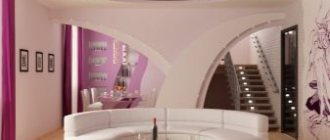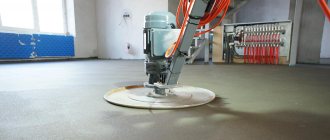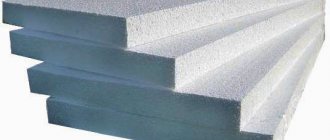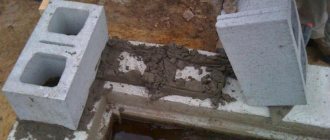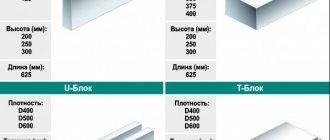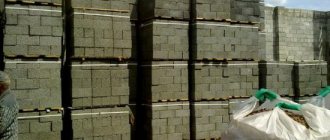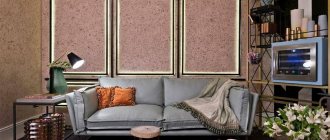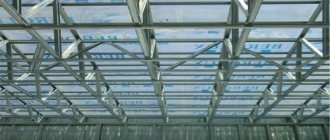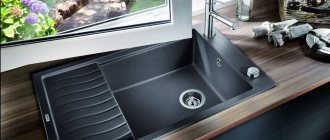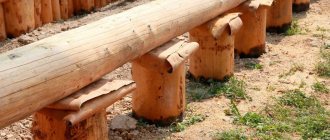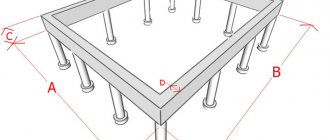Book a discount on repairs up to 10% for 15 days!
Enter your number and we will reserve a personal discount for you
To protect the floor from premature wear, create a unique design and cladding, veneer is often combined with other materials:
- Veneer with a thickness of no more than 0.5 mm, applied on top of the board with an adhesive composition.
- Veneer coated with floor varnish. According to reviews from owners, the advantage of this type of cladding is its long service life.
- Veneer with vinyl top. Protects against scratches and moisture getting inside the board, which guarantees the integrity of the floor for 10 years. The material is ideal for the kitchen, bathroom or winter garden.
- Veneer, which is made from valuable wood species and with a finishing layer of vinyl film, which makes the floor even more wear-resistant - you will agree that this is a significant plus.
Today, manufacturers offer coating options that, using the photo printing method, are made in a variety of designs. This can be a pattern in the form of stone, grass and other textures that look very natural and realistic. In Moscow, the price of their production turns out to be quite high, but, according to customer reviews, the finished design is worth it, and you can choose any design.
Cork flooring: pros and cons
Pros of cork flooring
On average, the service life of cork flooring ranges from 7 to 10 years, it all depends on its operating conditions and type. Adhesive flooring options are considered the most wear-resistant and durable. Another big advantage of cork is that rodents and insects are not interested in it.
In addition, the floor is hypoallergenic, does not absorb or accumulate dust and does not emit toxins. All of the listed beneficial properties are a huge plus and allow the material to be used by people suffering from allergies and diseases of the respiratory system.
At the same time, the floor, despite its strength, is soft and springy underfoot, which has a positive effect on the musculoskeletal system of both adults and children of all ages, as the load on the spine and limbs is reduced. Therefore, orthopedic doctors especially recommend walking on cork floors barefoot, sitting and even lying on it.
Recommended articles on this topic:
- Arrangement of a small apartment
- Stages of renovation in an apartment
- Turnkey cosmetic repairs
An additional advantage is good thermal conductivity, which is almost twice as high as that of air (0.04 versus 0.025 W/mK).
Manufacturers of cork floors also note the excellent soundproofing characteristics of oak bark material as a plus: the noise absorption coefficient can reach 0.85, that is, you will not bother your neighbors if you have a global rearrangement of furniture. But, of course, a cork floor will not protect you or your neighbors if noise comes from outside. But this circumstance can hardly be attributed to the disadvantages of coverage.
Thanks to the high coefficient of friction (0.4), the cork board does not slip at all - again a huge plus for families with small children. But it remains smooth due to protective wax or polymer coatings. The deformation of the cork material is no more than 0.2 mm (a huge plus) only in the presence of a static load (furniture, interior items), but once the weight is removed, the coating levels itself out.
Other beneficial properties of cork flooring are:
- resistance of the floor to ultraviolet radiation - the design retains its appearance, which, of course, is a big plus;
- the impossibility of spontaneous combustion is a huge plus for an environmentally friendly material;
- resistance to rotting and decomposition;
- lack of reaction to exposure to chemicals other than alkalis.
Cons of cork flooring
Of course, like any material, cork flooring also has its downsides.
The main disadvantage is the high price of the material, and in the future its operation may turn out to be expensive. Yes, cork is more expensive than traditional laminate, but it is more economical than solid wood. Of course, synthetic finishing layers are not natural materials, but they provide a guarantee of durability and strength. And as an investment for 10 years, purchasing such a coating looks more promising than a cheaper analogue, laminate, for example, whose service life is no more than 3–5 years.
The next disadvantage is the need for maintenance and additional treatment of the floor finish every 1-2 years to restore its properties and protect the natural board from absorbing odors, fats and moisture, reducing the risk of deformation and scratches on it.
Another disadvantage is the irrationality of installing a “warm floor” system under a cork covering due to its low thermal conductivity. Experts note not only the ineffectiveness of heat transfer when using materials together - no more than 20%, but also warn about the risks of prolonged heating of the cork coating, which can lead to drying out of the adhesive layer and delamination.
A minor drawback may be that the floor with locking systems gets wet, but this probability is small, since it only occurs as a result of improper installation. Next, we will consider the basic installation techniques, the observance of which guarantees that when using a cork floor you will not encounter some problems and disadvantages.
What is more effective: laying cork flooring or gluing it
In retail there are usually three types of cork floors:
- floating or interlocking floor;
- glue floor;
- technical jam.
The absolute leader in simplicity and convenience of self-installation is cork laminate, or interlocking flooring, which is panels with a central HDF layer that gives the floor the necessary rigidity. The bottom of the panel is a cork layer made of compressed chips (agglomerate), the top consists of several layers of agglomerate and decorative cork veneer. The total thickness of such panels is about 12 mm.
The panels are also equipped with a locking system (like a traditional laminate), and anyone who has basic skills in laying laminate with a locking system will appreciate this plus and can easily cope with installing this type of cork flooring. After installation, the surface must be coated with a special varnish, which can be purchased in the store along with the panels, or it comes as a bonus from the manufacturer when purchasing cork panels.
According to the owners, the advantage of this type of floor, in addition to quick installation, is its prompt dismantling. In other respects, which is noted as a minus, it is inferior to other types of floors, which we will consider further. First of all, this relates to the wear resistance of the joints, since with significant temperature changes they can diverge. This is due to the heterogeneity of the materials (cork itself and HDF) and the different ability of linear expansion, which must be taken into account when installing the panels.
When laying the floor, extreme care is required when applying the adhesive and careful adjustment of the cork panels to each other to eliminate gaps. Usually you can’t do this without the services of a professional, which can also be considered a disadvantage.
Cork panels consist of two layers: the bottom one is made of pressed chips, and the top one is solid with high-grade finishing veneer. The total thickness of the floor is 4 ÷ 6 mm, as a result of which the material fully reveals all its useful qualities (sound insulation, heat retention) and provides comfort and coziness in the house.
It should be remembered that such a floor is laid only on a well-prepared, leveled and clean base. An additional advantage of adhesive coatings is the ability to create patterns of any complexity on the floor: from simple mosaics from two or three types of cork in different shades to curvilinear patterns. Of course, to carry out a complex design solution, it is better to use the services of a highly qualified installer.
From the name “technical cork” it is clear that this type of coating is not used for finishing the board; production residues are used for its production. This material is used as a substrate when laying laminate flooring. Also, with the help of cork granules, you can eliminate defects and unevenness of the subfloor, for which the base is covered with crumbs.
Types of cork covering
Cork floors are divided into 3 types.
- Most often, adhesive coatings are found on sale. As the name suggests, the material is simply glued to the base. Of the variety of such coatings, tiles with a thickness of 3 mm stand out. It is distinguished by its wear resistance and hardness. For residential premises, material with a thickness of 6 mm is suitable, since walking on it is much more comfortable. Adhesive floors are expensive coatings. They are more durable, but their installation will take a lot of time.
- Floating cork flooring is laid in panels that are slotted together. The service life of this coating is 5 years. It can be extended by covering the surface with a layer of varnish.
- Technical cork is available on sale in the form of rolls and plates. It is used as a substrate under any basic floor, including laminate and linoleum.
Cork flooring in the kitchen and bathroom: pros and cons
Is it worth laying a cork board on the floor of the kitchen and bathroom, what are the pros and cons of the material in this case should be taken into account? Let's try to answer this question. Those who have used cork for kitchen floors are very pleased with the result, if the manufacturer's recommendations were followed during installation. Personal experience allows such people to find many advantages of such a solution. Although there is still an opinion that cork, like laminate and parquet, cannot be used in the kitchen and bathroom.
Undoubtedly, the kitchen and bathrooms are special areas in any apartment. Humidity, elevated temperature, and irregular ventilation have a bad effect on any finishing materials. But cork flooring is a very durable, fracture-resistant coating that does not slip (a big plus for a bathroom).
Consumers who decide to choose cork flooring for their kitchen note, of course, both the pros and cons of using it. Objective advantages are thermal conductivity - when walking on the floor barefoot, your feet do not freeze, spilled water is easily cleaned up and is not absorbed by the coating. The dishes do not break when dropped, since, despite the strength, the floor is quite soft.
Well, the disadvantages are as follows: it is difficult to notice dirt on the complex pattern of a cork floor, so it is better to wipe it entirely, then you will definitely not miss a single speck. According to reviews from the owners, when using a cork floor in the bathroom, no disadvantages were found, but on the contrary, enthusiastic owners cite only positive advantages and rejoice at the comfort.
Just keep in mind that for the floor in the kitchen or bathroom, a coating that is glued to the base is suitable. Then you will get the warmest and most consistent surface possible, and if installed correctly, you will not have to worry about mold or dirt. Compliance with installation technology will ensure thermal and waterproofing. In a bathroom, such a floor means comfort and uniqueness, the complete absence of fungus and the elimination of the risk of falling due to the non-slip surface, that is, nothing but advantages. It is recommended to entrust the installation of cork flooring to professionals, then you will be spared the hassle for many years.
Comparative characteristics of plug models
This section is dedicated to those who appreciate the benefits of cork flooring and are thinking about purchasing it. There are several coating options on the market, I’ll try to figure out what the advantages and disadvantages of each of them are.
Several types of cork cover allow you to diversify your decor
Choose the type of material based on your budget and needs
| Type of cork | Coating features |
| Adhesive tiles. | The design and installation method of this sample are somewhat similar to ceramic tiles. Despite the varied thickness of the tiles (3-7 mm), the most popular is the 6 mm one. The material is simply installed on the prepared coating using special glue. This prevents the slabs from diverging and the appearance of gaps between them. Thus, the adhesive method will allow for artistic installation, which will make the cork floor in the interior look quite original and fresh. |
Floating floor (interlock tiles). | The structure and method of laying this coating is similar to laminate. The model is multi-layered, equipped with a hard lining, onto which pressed cork is applied, and then natural veneer. The main advantage of interlocking tiles is that the panels are attached not to the floor, but to each other. This greatly simplifies the dismantling of the covering in case of moving. The instructions for installing such material are quite complex and require certain skills. But what is considered an advantage is, to some extent, also a disadvantage. The seams between the panels are not sealed, are susceptible to moisture and may collapse over time.
|
Rolled cork. | It is a homogeneous, seamless coating, whose installation is similar to the installation of linoleum. Before using a rolled cork, be sure to thoroughly prepare the surface, otherwise all roughness and irregularities will be visible. Also keep in mind that installation should go smoothly on the first try. The fact is that the glue dries quickly after applying the material to it, and you will no longer be able to trim or move the roll you are using. |
It's hard to believe, but this floor is also made of cork.
Installing interlocking tiles is similar to installing laminate flooring
This is what the roll coating looks like
How to properly care for cork floors
Caring for a cork floor is quite easy - another plus: you can clean it with a vacuum cleaner, wipe it with damp cloths using detergents that do not contain aggressive alkaline components. However, pay attention to spilled liquid; it is better to clean it up immediately. The cork is not afraid of water, but you shouldn’t get it too wet either.
It is not recommended to clean the floor with hard brushes, metal scrapers, or abrasives, as there is a risk of scratching the surface. If stubborn stains appear on the cork, you can easily remove them with fine-grained sandpaper. Of course, the coating will be damaged and a small defect will form on it, but this can be eliminated by applying wax or varnish to the damaged area.
As we said earlier, once every 1-2 years the floor with photo printing needs to be updated. Additional maintenance costs are a minus, but the big plus is that the floor will always look like new, and its durability will remain high. First, the old varnish is removed with sandpaper or a sanding machine, its remains are removed from the floor with a vacuum cleaner, and then fresh polyurethane varnish is applied to the cleaned surface, which dries within 12 hours. The coating completely restores the original appearance and continues to delight.
In order for the floor to last even longer and reveal all its advantages, you need to follow a few simple rules:
- Use stickers on the legs of heavy furniture or special pads made of cork or felt to protect the covering from dents.
- Place a rug to protect the floor in the hallway. Try to avoid rugs with a rubber or latex backing to prevent marks and streaks on the cork.
- Keep the temperature no higher than 20–25 degrees and humidity up to 50% in the room to reduce the risk of the cork floor drying out. In winter, it is advisable to use air humidification systems - this way you will prevent premature cracking of the coating and avoid other disadvantages of operation.
Uniformity of decors
The icing on the cake is the myth about the specific appearance of cork floor decors, which, even taking into account the tinting, remain very monotonous. Introducing an innovation - a stopper with photo printing. Thanks to a special technology for direct application of high-resolution images, the coating very brightly and realistically imitates the texture of wood, natural stone, abstractions or drawings. Hundreds of new decors and the same unsurpassed performance characteristics of cork!
We invite you to the Polov salons in Moscow and Odintsovo: see samples of cork flooring, study quality certificates, ask related questions to the manager or technologist, and arrange delivery. You can also order free delivery of samples to your home.
How much does cork flooring cost?
When choosing a floor covering, everyone first of all pays attention to the price; it can become both a minus and a plus when the buyer makes a decision. The cost of a cork floor depends on its type, quality, density, manufacturer and is usually significantly higher than traditional analogues (and this is the main disadvantage). The cost of material for installing a floating cork floor ranges from 700 to 2,000 rubles per m2. Adhesive cork floors are more affordable - from 600 to 1,200 rubles per m2, which can be a plus for choosing this flooring material option.
Prices for laying floors also vary depending on its type, complexity of the work and qualifications of the technician. Installation of interlocking cork covering costs from 250 to 350 rubles per m2. Laying an adhesive cork floor costs more - from 350 to 500 rubles per m2 - an obvious disadvantage. Installing slabs diagonally will cost even more, which, of course, is also a minus.
Cooperating with is reliable and prestigious. The specialists working here are professionals of the highest level. operates throughout Moscow and the Moscow region.
Water resistance
An adhesive plug for floors and walls, after laying and treating with polyurethane varnish in 3-5 layers, turns into a durable monolith that is not afraid of high humidity and direct contact with water : in the shower, bathtub, dressing room, around the pool, with the exception of steam rooms. At the same time, the surface of the cork floor has an anti-slip effect.
Adhesive cork, as well as interlocking cork laminate on a HYDRO basis, can withstand flooding of any scale without any consequences!
